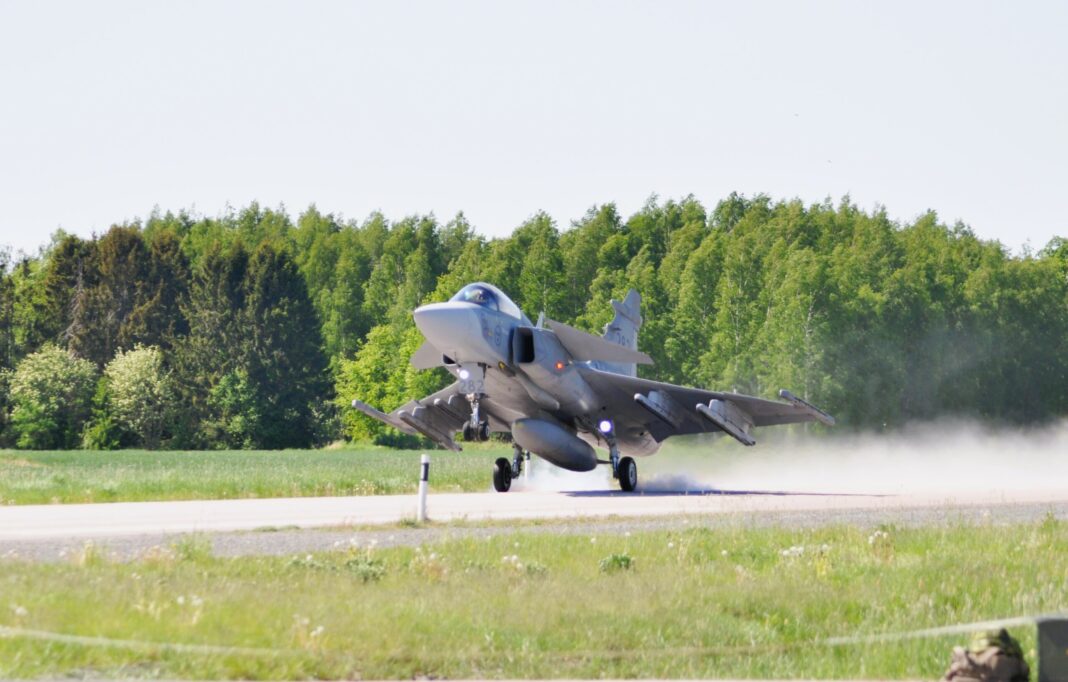Colombia has made a significant decision in modernizing its air force by selecting the Swedish Saab Gripen-E/F fighter jets over the French Rafale.
Colombia Chooses Gripen Over Rafale In A Landmark Decision
The announcement came on April 2 when the Colombian President declared that the country had signed a Letter of Intent (LoI) with Sweden for the purchase of these advanced aircraft. This decision followed months of deliberation, where the United States’ F-16, France’s Rafale, and Sweden’s Gripen were all in consideration.
The Colombian government had previously expressed its intention to replace its aging fleet of Israeli-origin Kfir fighter jets. With a budget of $3.65 billion set aside for this purchase, the country sought a modern combat aircraft to bolster its aerial capabilities.
The Gripen-E/F emerged as the preferred choice due to its advanced technology, combat efficiency, and cost-effectiveness. The selection also aligns Colombia with Brazil, the only other South American nation to operate the Gripen-E variant.
JAS-39 Gripen Rejected? U.S. May Force Canada Into F-35 Deal with No Way Out
Saab’s Rising Gripen Defeats Rafale Again
This is not the first time this fighter jet has outperformed the Rafale in a competitive bidding process. Brazil, in 2014, had also chosen the Swedish fighter over its French counterpart. The key factors in Brazil’s decision were Gripen’s lower acquisition cost, reduced operational expenses, and Sweden’s willingness to provide a significant transfer of technology (ToT).
Reports indicated that Brazil could procure 36 Gripen-E jets for nearly half the price of what it would have cost to buy Rafales. Additionally, the Gripen’s operational cost per flight hour stood at around $4,000, whereas the Rafale’s was estimated at $14,000.
A critical element in Brazil’s selection of the Gripen was Saab’s agreement to allow local production of the aircraft, strengthening the country’s domestic defense industry. A dedicated production line was established in partnership with Brazilian aerospace giant Embraer. The collaboration not only secured Brazil’s investment in the Gripen but also positioned it as a manufacturing hub for the aircraft in the region.
Sweden Deploys Powerful JAS-39 Gripen Fighters to Shield NATO Borders Amid Rising Russian Threats
In contrast, France’s Dassault Aviation has historically been reluctant to transfer key Rafale technologies to foreign countries, making the fighter jet a more attractive option.
Colombia’s choice to follow Brazil’s path signals a broader shift in South America’s defense strategy. By aligning with Sweden, Colombia has ensured that its new fighter jets are technologically advanced, cost-efficient, and easier to maintain. The Gripen’s superior avionics, sensor fusion capabilities, and ease of operation in rough terrains make it a highly suitable choice for the country’s security needs.
Gripen Expands Its Presence In Latin America
Saab’s victory in Colombia comes on the heels of another major success in Thailand, where it won a contract over the US-made F-16 Block 70/72. This recent trend indicates a growing preference for the fighter jet in the global fighter jet market. While the Philippines had initially shown interest in acquiring the Gripen, it later opted for 20 F-16 Vipers. However, there is speculation that Manila may still place an order for Gripens in the future.
Apart from Brazil and Colombia, Argentina and Peru have also evaluated the fighter jet. While Argentina ultimately decided to purchase decommissioned Danish F-16s, Peru remains in the assessment phase. Saab has aggressively marketed the fighter jet as a cost-effective yet highly capable alternative to American and European fighter jets, and its recent successes further cement its place as a rising force in military aviation.
The Gripen-E is designed to operate efficiently in rugged environments, a crucial factor for South American nations dealing with diverse terrains. It features an advanced General Electric F414-GE-39E engine, state-of-the-art AESA radar, and an InfraRed Search and Track System (IRST) to detect threats from long distances.
The aircraft’s Human-Machine Collaboration (HMC) system filters out unnecessary information, allowing pilots to focus only on mission-critical data. Moreover, its lightweight design and lower maintenance requirements make it an ideal choice for countries looking to optimize their defense budgets.
Macron Rages Against Patriot and F-35 ‘Threat,’ Urges Europe to Buy SAMP/T NG and Rafale
With Colombia’s latest decision, Saab has delivered another major setback to the Rafale in South America. This fighter jet’s growing presence in the region highlights a shift toward cost-effective, technologically advanced, and strategically beneficial fighter aircraft. Saab’s continued success in securing contracts further strengthens its position in the competitive global defense market.

